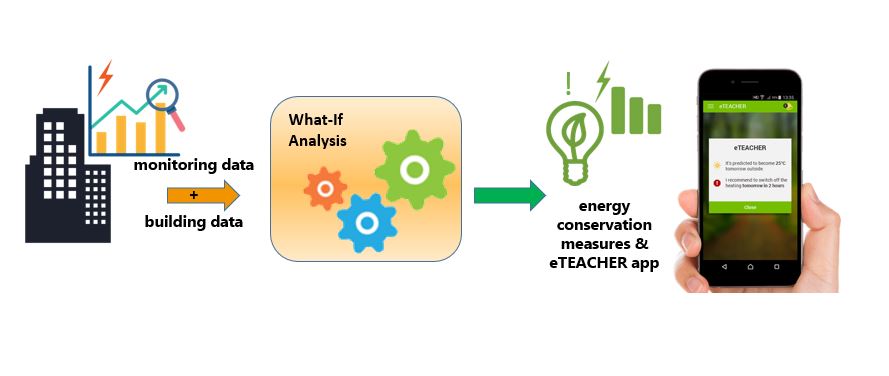eTEACHER tool: the What-if-Analysis
The What-if-Analysis is a software tool that aims at providing building users with tailored recommendations on how they can reduce building energy consumption and energy costs. For that purpose, different strategies for engaging user into more energy-efficient behavior have been investigated and a catalogue of energy conservation measures has been elaborated. These energy conservation measures consists of different simple actions on the building energy system that a building user (resident, facility manager, staff, etc.) can undertake. These actions shall support the user saving energy and removing the bad habits that lead to energy wasting. These energy conservation measures consist for example of:
- Saving cooling and heating energy through more optimal HVAC settings, improvements of solar energy gains by acting on shading components, avoiding energy wastes through openings or when rooms are not occupied.
- Saving lighting energy using more natural light or powering-off fixtures when there is no need for using artificial light.
- Saving electrical energy by switching off unnecessary appliances, devices or equipment when not use
To make it possible for a software tool to automatically identify and evaluate proper energy conservation measures in real time during building operation, modern technics from the field of data analysis and artificial intelligence are utilized. Especially, one big challenge in making the What-if-Analysis tool resides in its ability to be used in any kind of building regardless of its existing technical systems, its end-users and available information. Fraunhofer IIS EAS is developing this tool that will be integrated into the overall eTeacher software package.

Latest News
eTEACHER Newsletter 6
READ IT ONLINE Dear reader, Time flies and after four intensive years of work, eTEACHER is coming to an end! A lot has happened in the past few months, and we have continued working on the demonstration of eTEACHER solutions in our 12 pilot buildings. Close supervision of the monitoring and the ICT tools allowed […]
